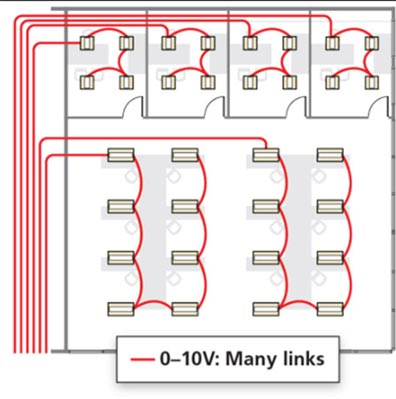- Home
- Why OneAdvantEdge?
- Solutions
- Products
- Specialty
- Experience Center
- Post News
- Employment
- Contact Us
Fixtures are an important aspect of every project as they provide the ambient necessary for both indoor and outdoor use. While it is typical for an architect or an interior designer to select the location and quantity of fixtures for the project with the owner, OneAdvantEdge further assist our clients with selecting the type of fixture they will need for each location.
OneAdvantEdge provides the best possible fixture solution for each project by making sure that the lighting chosen provides the adequate amount of light necessary to create the best ambiance needed in order to achieve the highest result. Most fixtures chosen by OneAdvantEdge are tested in our lab rooms and experience center before they are installed in the project to confirm compatibility with the lighting control system. By doing this, our clients can rest assured knowing that they will receive the best lighting products in the industry for the scope of their project.
Important facts about LED lighting:
LED’s are the newest form of light bulbs available on the market and even though they are the priciest there are many benefits to making the switch.
The technology behind LED bulbs allows them to outlast incandescent bulbs which will save you money in the long run. Typical lifespan with average use is anywhere from 10 to 20 years as opposed to the 2-year life for incandescent. The light emitted from LED bulbs is directional which allows you to focus the light on a specific area or spot. It’s harder to direct light coming from incandescent bulbs because the light comes from all angles.
Sample LED Fixture Selection - - - > 3000k | 90CRI | ELV Driver
- Kelvin “K” – Referred to the color temperature of an LED bulb.
Rather than having one color temperature as is the case with incandescent bulbs, LED’s come in a range of color temperatures referred to as a “Correlated Color Temperature” which corresponds to a scale known as Kelvin (K) which allow you to achieve the desired color of choice. The preferred light color is achieved by the numbers within the scale; lower numbers on the Kelvin scale will result in warmer tones (more yellow) while higher numbers result in cooler tones (bluer). Deciding a color temperature to use is personal preference but it is critical to creating the desired mood.
- Color Rendering Index “CRI” – Referred to the intensity of the color and the quality of the lamp of an LED bulb by oversaturating and accentuating certain mixed colors (greens, blacks, whites, and blues).
A simple rule of practical guidance to choose the CRI of a fixture is that anything 80 and below is considered mid to low range color quality and anything 90 or above is considered a high-quality color.
- Drivers (Transformers) – Referred to the component that provides power to the LED fixture which can be a switch or dimmable.
There are three standard types of drivers used in the USA.
- ELV: Is an electronic low voltage driver that requires a predetermination of the lighting control zones.
- 0-10: Is an electronic low voltage driver that requires a predetermination of the lighting control zones as well as the low voltage control zones.
- Lutron ECO-System: Is an electronic low voltage driver introduced by Lutron within the industry to provide an advantage to all others because it does not require a predetermination lighting control zone or low voltage control zone. This is accomplished by assigning an individual address for each driver which reduces the cost of labor/materials and provides more flexibility for indefinite zone control.
Rather than having one color temperature as is the case with incandescent bulbs, LED’s come in a range of color temperatures referred to as a “Correlated Color Temperature” which corresponds to a scale known as Kelvin (K) which allow you to achieve the desired color of choice. The preferred light color is achieved by the numbers within the scale; lower numbers on the Kelvin scale will result in warmer tones (more yellow) while higher numbers result in cooler tones (bluer). Deciding a color temperature to use is personal preference but it is critical to creating the desired mood.
A simple rule of practical guidance to choose the CRI of a fixture is that anything 80 and below is considered mid to low range color quality and anything 90 or above is considered a high-quality color.
There are three standard types of drivers used in the USA.
- ELV: Is an electronic low voltage driver that requires a predetermination of the lighting control zones.
- 0-10: Is an electronic low voltage driver that requires a predetermination of the lighting control zones as well as the low voltage control zones.
- Lutron ECO-System: Is an electronic low voltage driver introduced by Lutron within the industry to provide an advantage to all others because it does not require a predetermination lighting control zone or low voltage control zone. This is accomplished by assigning an individual address for each driver which reduces the cost of labor/materials and provides more flexibility for indefinite zone control.
Driver Wiring Sample Images


